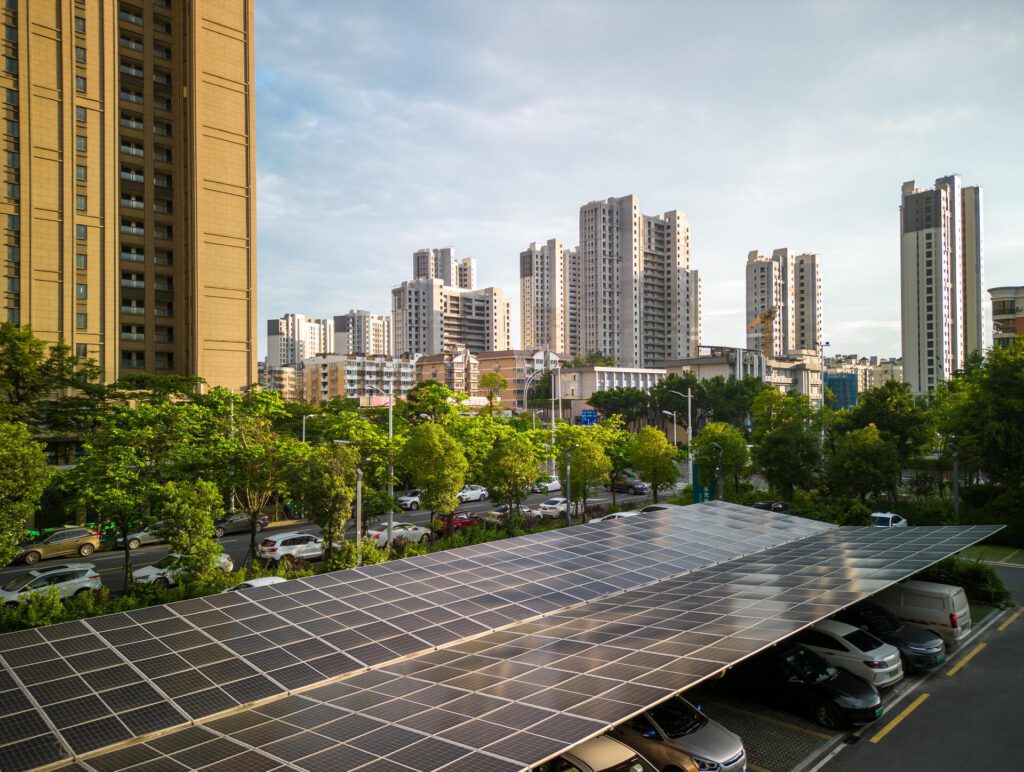Pressure from consumers, investors, and regulators – driven by regional and global initiatives such as the European Energy Directive (EED) and the Paris Agreement – requires global organizations to quickly identify ways to reduce their environmental impact. Companies are further expected to be transparent and accountable by disclosing their energy and sustainability practices. In response, 93% of today’s CEOs believe sustainability is vital to future success.

My last post discussed the importance of establishing sustainable, connected buildings, which requires the right technology and expertise. This post will look at how changes in the ways energy is generated and consumed provide building owners and operators powerful new opportunities to further improve sustainability and resilience. You can expect that combining the best in technology and expert services can accelerate that success.
Let’s examine each driver and innovative solutions to help you take advantage of them.
Pathways to decarbonization
There are two main pathway categories to decarbonization.
The first category involves how energy is generated. Recently, we’ve seen a proliferation of renewable energy sources, estimated to deliver 70% of new energy capacity additions by 2040.
Electrification is the second important category. Electricity is the cleanest and most efficient energy source. Replacing fossil-fuel-based loads like gas-powered boilers with high-efficiency electrical alternatives like heat pumps will significantly reduce a building’s carbon footprint. You can also replace gas-powered fleets with electric vehicles (EVs) supported by a smart EV charging infrastructure.
The resilience and economy of decentralized energy
Traditionally, large centrally located power plants generated electricity and then transmitted to end users through hundreds of miles of electrical lines and substations. However, the grid is quickly evolving as distributed energy resources (DERs) technology improves, and costs continue to decrease.
DERs are often comprised of utility-owned renewable energy installations like wind and solar farms. However, it also includes energy consumers becoming ‘prosumers’ by installing their own on-site renewable energy sources and energy storage.
By combining new solutions on the facility and grid side, the future will see increasing numbers of smaller, decentralized microgrids that provide customers greater control over electricity sources. This further helps optimize costs and achieves greater resilience against grid interruptions—more on that below. Having more significant amounts of grid-interactive DERs helps grid operators maintain grid resilience.
Making facilities smarter with digitalization
We believe that all-electric, all-digital facilities are the key to becoming more resilient, sustainable, and efficient in the new energy landscape. We call this Electricity 4.0. I talked about the benefits of electrification above. But what about digitalization?
Digital technology includes IoT-connected devices like smart meters, circuit breakers, sensors, controls, software apps, and cloud-based analytics. Digitalization helps make the previously invisible visible. You’ll eliminate waste, address the untapped potential for savings, and improve the efficiency of your facility while reducing energy-related emissions. Greater visibility will also help you optimize safety, equipment reliability, performance, and lifespan. All this adds up to lower capital expenditures (CapEx), lower operating expenses (OpEx), and greater profitability.
The new energy landscape creates opportunities for facility owners and operators to actively choose how energy is sourced, what it costs, and how it is consumed. Digital technology and services available today can help you on this journey, including:
- Turning your facility into a microgrid. A microgrid allows you to generate and consume your own electricity on-site (even if the grid goes down or prices peak) and use it when you need it most. It will connect, monitor, and control your facility’s distributed energy resources while enhancing performance, sustainability, and business continuity. EcoStruxure Microgrid Advisor enables your microgrid to self-optimize between supply and demand and maximize the use of green energy while meeting objectives for resilience, efficiency, and energy costs.
- Getting the most from your energy assets and systems. You may have a wide range of energy assets, including heating, cooling, power management, drives, motors, rotating equipment, UPS, etc. Managing this equipment to maintain safety and uptime is challenging if you have limited facility resources. EcoStruxure Asset Advisor can help by evaluating critical connected assets and applying advanced analytics to identify potential threats. You can then take action or leverage our experts on your behalf. For facilities with large amounts of equipment and systems being connected and monitored, it is easy to become overloaded by big data. To support this, EcoStruxure Asset Advisor can be paired with EcoStruxure Power Advisor technology within the EcoStruxure Service Plan. This helps you simplify data management, streamline your processes, improve facility sustainability, and extend the lifespan of your assets and systems
You can take full advantage of the new energy landscape with the right partner. Discover how Schneider Electric’s digital services can help you meet today’s challenges, become more energy independent, and future-proof your facilities and business. To learn more, download our Digital Services eGuide.



